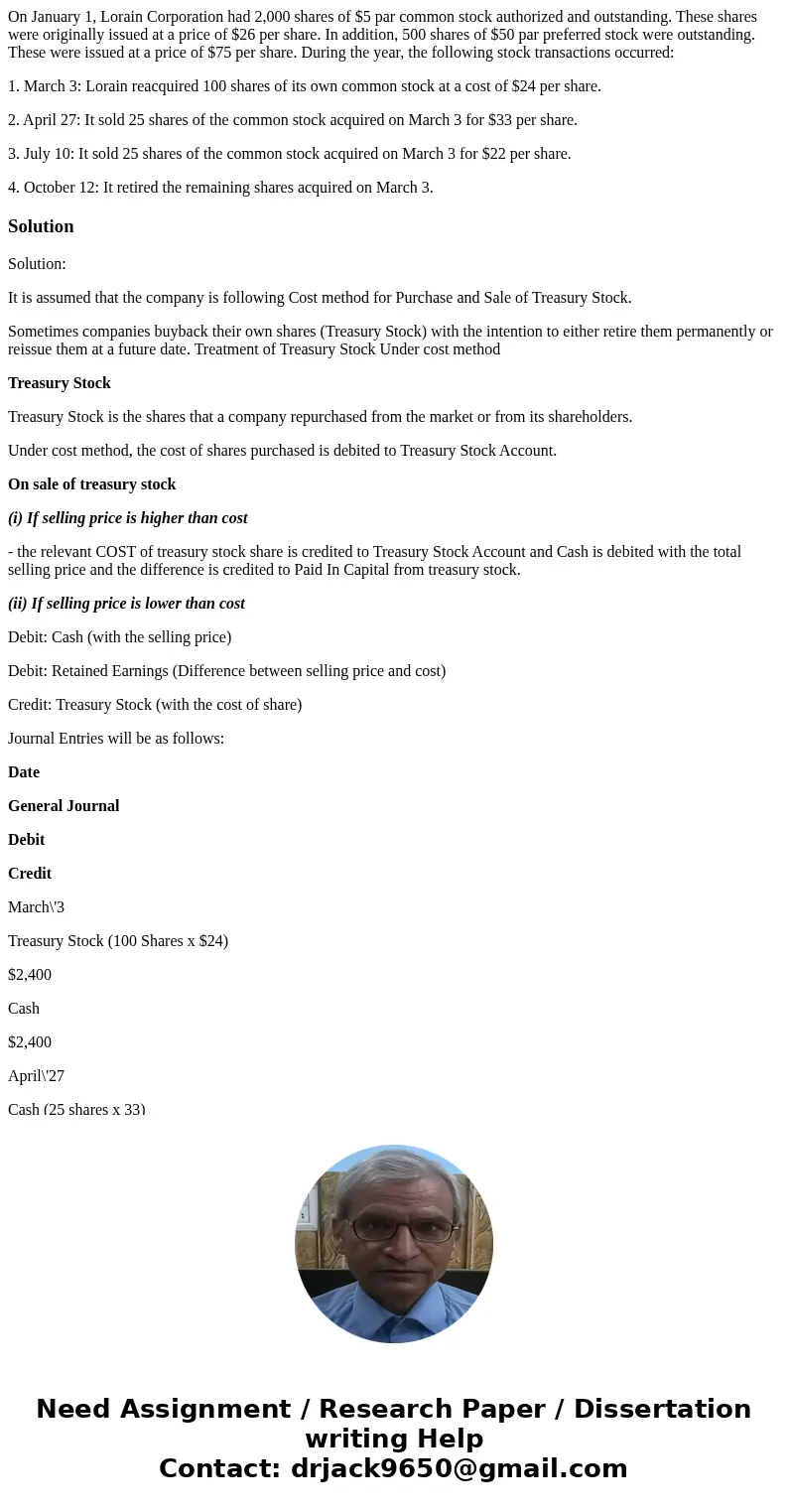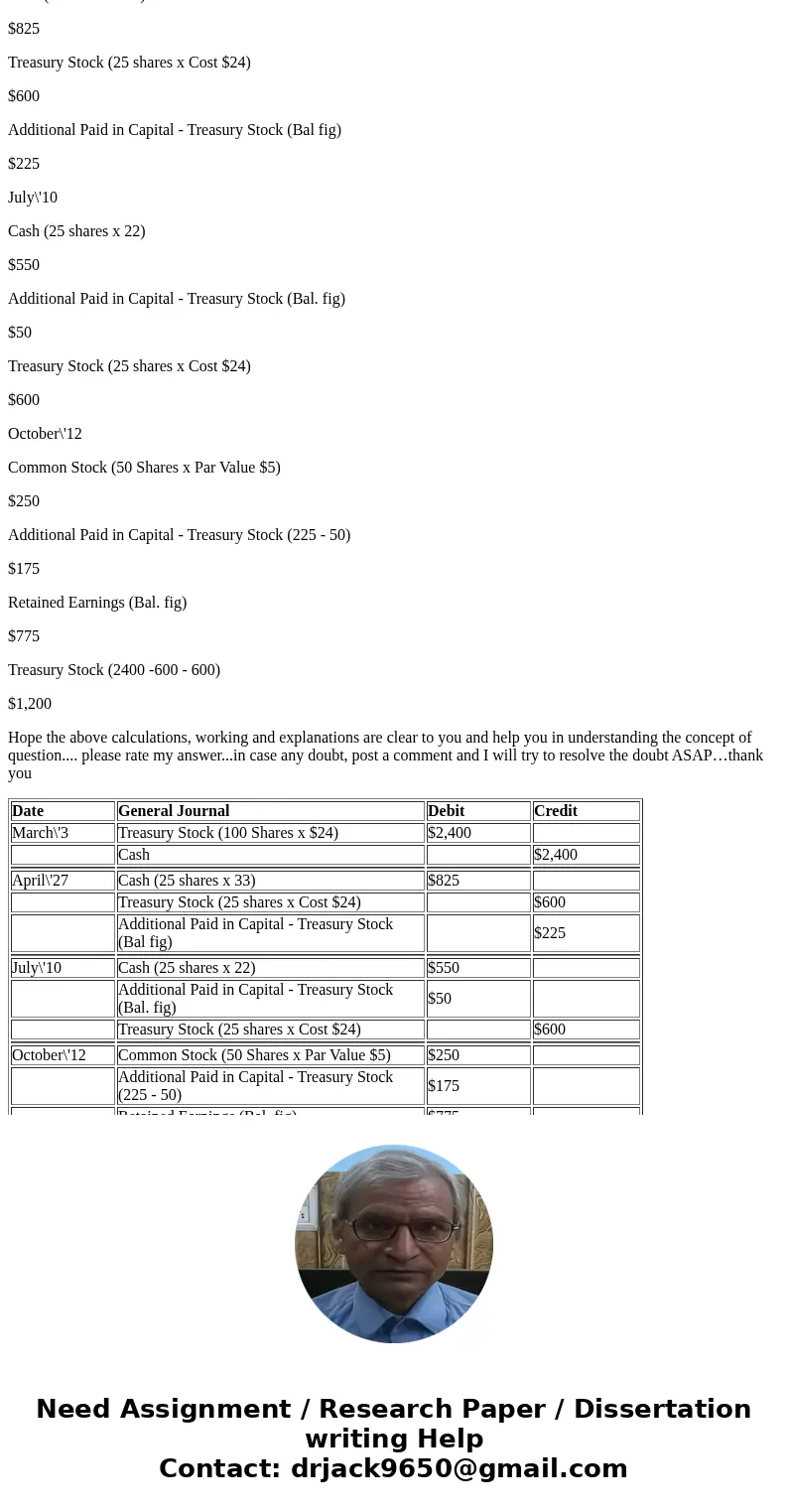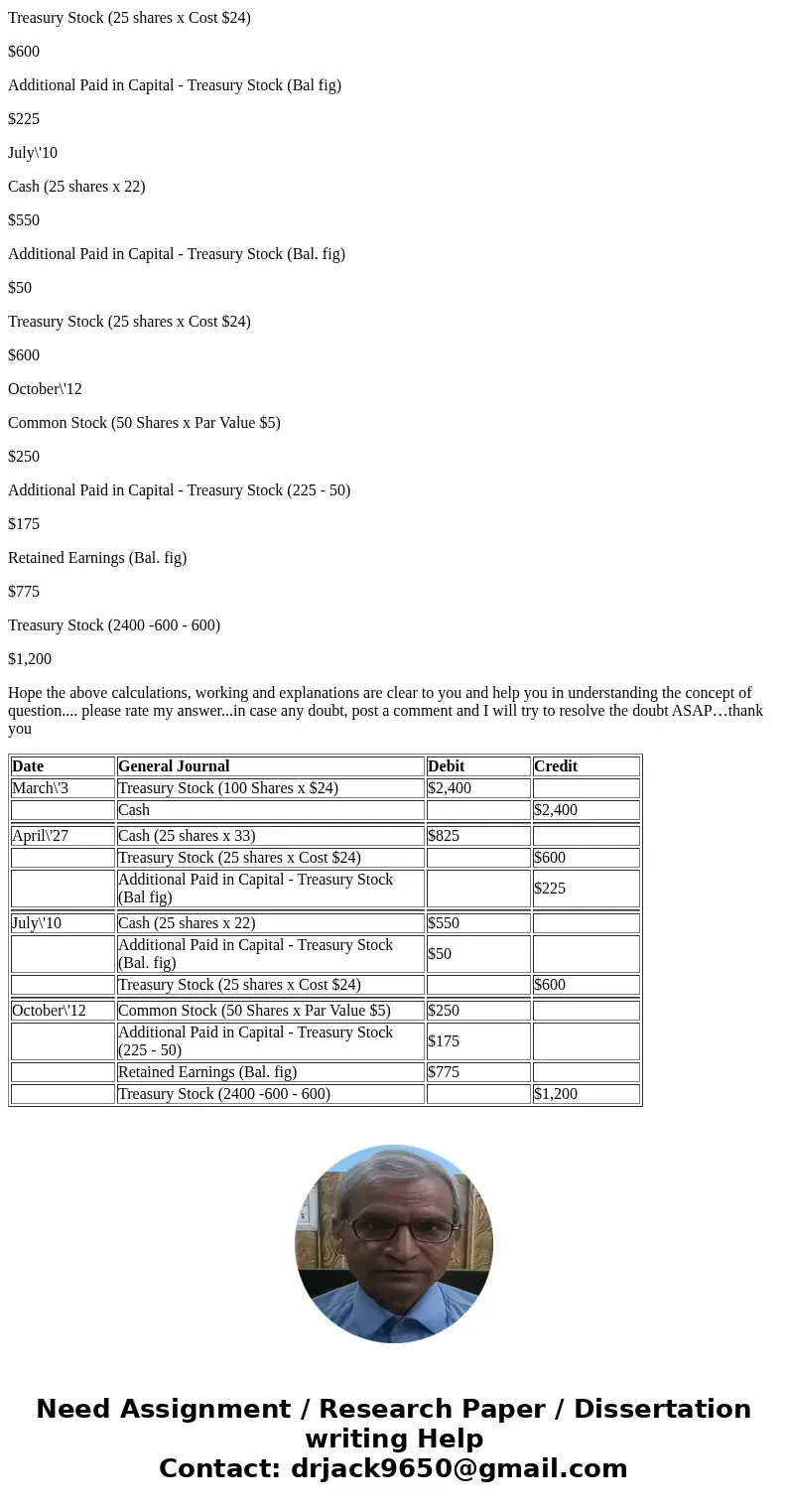On January 1 Lorain Corporation had 2000 shares of 5 par com
On January 1, Lorain Corporation had 2,000 shares of $5 par common stock authorized and outstanding. These shares were originally issued at a price of $26 per share. In addition, 500 shares of $50 par preferred stock were outstanding. These were issued at a price of $75 per share. During the year, the following stock transactions occurred:
1. March 3: Lorain reacquired 100 shares of its own common stock at a cost of $24 per share.
2. April 27: It sold 25 shares of the common stock acquired on March 3 for $33 per share.
3. July 10: It sold 25 shares of the common stock acquired on March 3 for $22 per share.
4. October 12: It retired the remaining shares acquired on March 3.
Solution
Solution:
It is assumed that the company is following Cost method for Purchase and Sale of Treasury Stock.
Sometimes companies buyback their own shares (Treasury Stock) with the intention to either retire them permanently or reissue them at a future date. Treatment of Treasury Stock Under cost method
Treasury Stock
Treasury Stock is the shares that a company repurchased from the market or from its shareholders.
Under cost method, the cost of shares purchased is debited to Treasury Stock Account.
On sale of treasury stock
(i) If selling price is higher than cost
- the relevant COST of treasury stock share is credited to Treasury Stock Account and Cash is debited with the total selling price and the difference is credited to Paid In Capital from treasury stock.
(ii) If selling price is lower than cost
Debit: Cash (with the selling price)
Debit: Retained Earnings (Difference between selling price and cost)
Credit: Treasury Stock (with the cost of share)
Journal Entries will be as follows:
Date
General Journal
Debit
Credit
March\'3
Treasury Stock (100 Shares x $24)
$2,400
Cash
$2,400
April\'27
Cash (25 shares x 33)
$825
Treasury Stock (25 shares x Cost $24)
$600
Additional Paid in Capital - Treasury Stock (Bal fig)
$225
July\'10
Cash (25 shares x 22)
$550
Additional Paid in Capital - Treasury Stock (Bal. fig)
$50
Treasury Stock (25 shares x Cost $24)
$600
October\'12
Common Stock (50 Shares x Par Value $5)
$250
Additional Paid in Capital - Treasury Stock (225 - 50)
$175
Retained Earnings (Bal. fig)
$775
Treasury Stock (2400 -600 - 600)
$1,200
Hope the above calculations, working and explanations are clear to you and help you in understanding the concept of question.... please rate my answer...in case any doubt, post a comment and I will try to resolve the doubt ASAP…thank you
| Date | General Journal | Debit | Credit |
| March\'3 | Treasury Stock (100 Shares x $24) | $2,400 | |
| Cash | $2,400 | ||
| April\'27 | Cash (25 shares x 33) | $825 | |
| Treasury Stock (25 shares x Cost $24) | $600 | ||
| Additional Paid in Capital - Treasury Stock (Bal fig) | $225 | ||
| July\'10 | Cash (25 shares x 22) | $550 | |
| Additional Paid in Capital - Treasury Stock (Bal. fig) | $50 | ||
| Treasury Stock (25 shares x Cost $24) | $600 | ||
| October\'12 | Common Stock (50 Shares x Par Value $5) | $250 | |
| Additional Paid in Capital - Treasury Stock (225 - 50) | $175 | ||
| Retained Earnings (Bal. fig) | $775 | ||
| Treasury Stock (2400 -600 - 600) | $1,200 |



 Homework Sourse
Homework Sourse